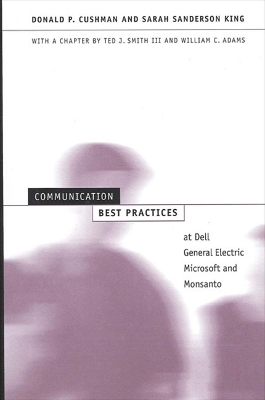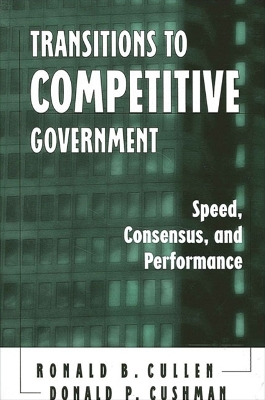SUNY series, Human Communication Processes
3 total works
Communication Best Practices at Dell, General Electric, Microsoft, and Monsanto
by Donald P. Cushman and Sarah Sanderson King
Published 2 July 2003
Through case studies of communication best practices at Dell, General Electric, Microsoft, and Monsanto, this book provides specific and powerful theories for leadership, marketing, and stockholder communication. Best practice limitations are also revealed in the cases of IBM, the Bumper Works, and Asea Brown and Boveri, where organizational learning, a firm's timeline, and corporate culture made implementation difficult. Taken collectively, these case studies suggest several ways in which benchmarking can become an important research methodology and theorist tool for understanding excellence in organizational practice.
Organizational Teamwork in High-Speed Management
by Yanan Ju and Donald P. Cushman
Published 15 December 1994
Teamwork in the context of high-speed management has never before been treated systematically, and high-speed management as a concept or as a field of study has only been a recent phenomenon. This book addresses the intersection of these two areas of research and organizational practice. Both areas are seen as fundamental parts of the communication processes that sustain an organization's competitive advantage in an increasingly chaotic environment.
What makes this book unique is that the subject of teamwork in high-speed management is treated at three important levels: philosophical, theoretical, and practical. Issues covered include: how organizational structure affects teamwork; how teams should anchor themselves and be anchored in organizational life; and how an organization should coalign its internal and external resources with its competitive environment.
Finally, the book addresses and prescribes how organizations can meet the challenge of an uncertain future using the skills of teamwork and high-speed management successfully.
What makes this book unique is that the subject of teamwork in high-speed management is treated at three important levels: philosophical, theoretical, and practical. Issues covered include: how organizational structure affects teamwork; how teams should anchor themselves and be anchored in organizational life; and how an organization should coalign its internal and external resources with its competitive environment.
Finally, the book addresses and prescribes how organizations can meet the challenge of an uncertain future using the skills of teamwork and high-speed management successfully.
Transitions to Competitive Government
by Ronald B. Cullen and Donald P. Cushman
Published 31 August 2000


